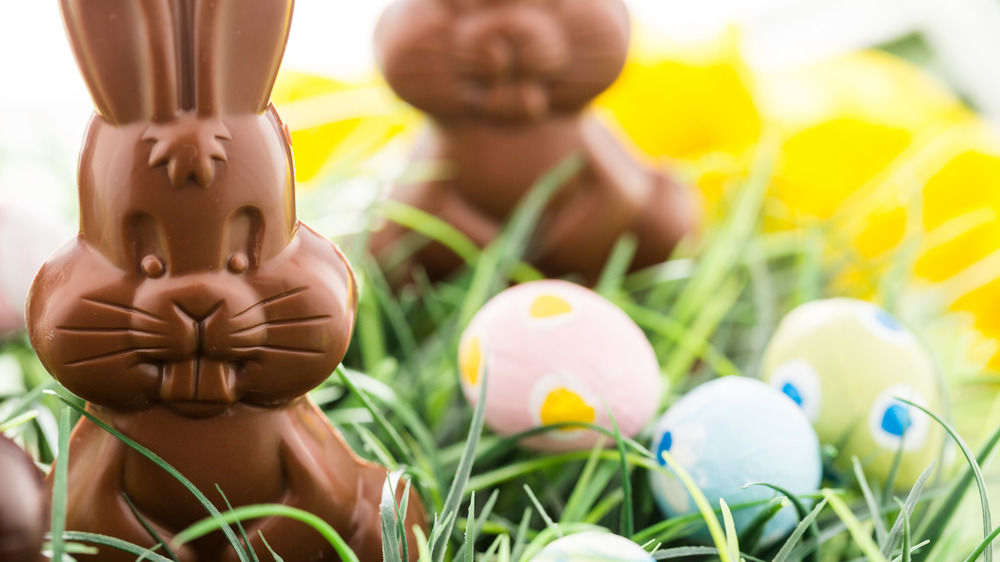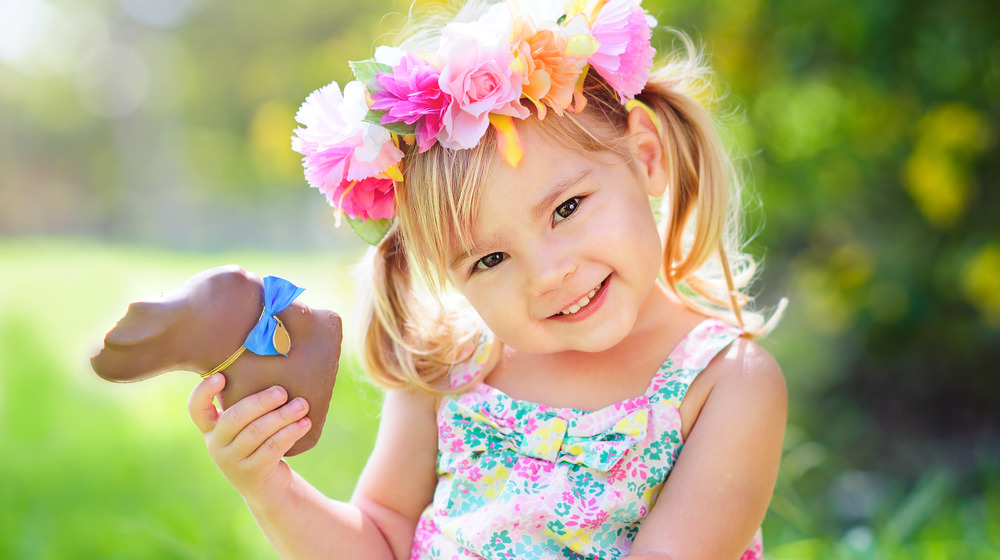Here's Where America's Chocolate Easter Bunny Tradition Might Have Come From
To get to the origins of the chocolate Easter bunny tradition, you need to take a deep dive into history. Although Easter celebrates the return of Jesus Christ from the dead three days after his crucifixion in 30 A.D., many of the traditions we associate with the holiday can be traced to decidedly non-Christian roots (via History).
One reason is that Easter has always been connected to the Jewish holiday, Passover. This holiday celebrates Jewish freedom from slavery in Egypt through the retelling of the epic journey over a multi-course festive supper called a "seder" — which is what many people believe Jesus's Last Supper was, according to the Jerusalem Post. Because the eating of hard-boiled eggs is now part of the traditional seder, one might assume the tradition of decorating and hiding Easter eggs evolved from Easter's interconnection with Passover. However, the egg-related traditions for both Easter and Passover began well after Christ's time, according to Haaretz.
Meanwhile, the notion of a cotton-tailed bunny laying and hiding those eggs came even later, according to Live Science, which traces the first written record of the "egg-laying Easter Bunny" to a German medical anthology published in 1682. Apparently, German folklore included a character known as the "Osterhase," or, in English, the "Easter Hare," who was known to "hatch and hide multicolored eggs for children (and gullible adults) to discover around their homes and gardens on Easter Sunday."
But that still doesn't explain how the American Easter bunny tradition came to involve bunnies made of chocolate.
Here is why the American Easter bunny is often made of chocolate
For lack of other more compelling theories, the Easter bunny's origins have been traced to German folklore dating back to the Renaissance, per Live Science, when rabbits started turning up as a symbol of Jesus Christ's immaculate conception in religious paintings. By the late 17th century, the Osterhase ("Easter Hare") had already become a beloved figure among Germany's youth, who looked forward to finding and collecting the Osterhase's multi-colored eggs on Easter Sunday. By the 18th century, German immigrants began arriving in droves to the U.S. (via Immigrant Foundation), and it seems they brought the tradition with them.
"Eventually, the custom spread across the U.S. and the fabled rabbit's Easter morning deliveries expanded to include chocolate and other types of candy and gifts," according to History. But it wasn't until 1916 that chocolate Easter bunnies began to manufactured widely (via Food Network). That was when the Bortz Chocolate Company started making them in large batches. Although, it wouldn't be until the 1940s that the tradition of giving those chocolate bunnies to children at Easter would take hold, according to Food Network.

